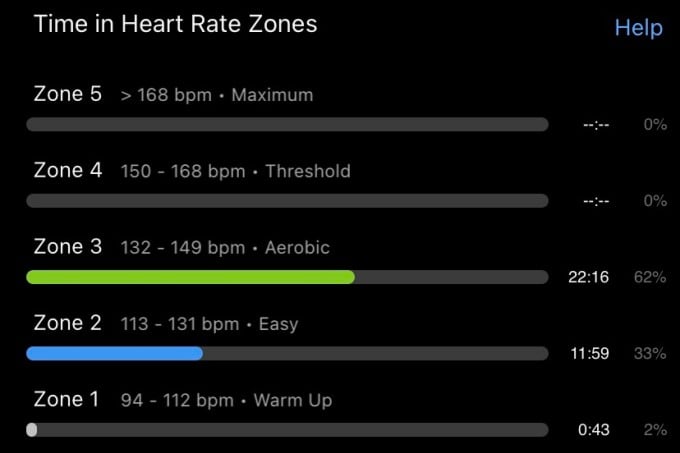Studies show that running slowly for the majority of your workout can provide more sustainable benefits and progress for runners.

Jogging at a pace where you can chat with your running partner is a great exercise for runners. Photo: Runner's World
“From our research, elite athletes, including Eliud Kipchoge, train about 80% of the time at what we call low intensity and only spend 20% of the time doing heavy training,” Dr. Stephen Seiler of the University of Agder, Norway, one of the world's leading sports physiologists, told Runner's World .
Seiler gained a better understanding of endurance in the early 2000s, when he analyzed a large body of research on training intensity and duration. Since then, further research by sports scientists such as Veronique Billat, Augusto Zapico, and Jonathan Esteve-Lanao has validated Seiler's theory that the "80/20 method" is the pinnacle of running training.
“Whether elite runners train 20 or 40 hours a week, training typically follows this 80/20 split,” says Seiler.
Legendary British marathoner Paula Radcliffe used to follow the 80/20 training regime at her peak in 2003. Back then, she ran at low intensity 12 out of 15 times, for a total of 257km per week, over an eight-day cycle.
The same principle holds true for casual runners, who run a maximum of three or four times a week . “We’ve done further research and shown that this works whether you train four or 14 times a week,” Seiler says. He adds that the 80/20 approach is arguably more important for casual runners, who often misjudge their own intensity when they first start to feel their fitness improving.
“A lot of amateurs try to push themselves to the limit every time, so they train a lot at this level. They improve initially, but then stagnate. The problem is that they become too tired to do high-intensity workouts,” Seiler explains.

Continuous high-intensity training will not bring long-term effectiveness and progress for runners. Photo: Fitpage
Studies show that amateur runners prefer to run 50 percent at moderate to high intensity and 50 percent at low intensity. When Esteve-Lanao asked experienced runners from well-known running teams to follow a 50/50 and 80/20 training split, the 80/20 group improved their 10K performance by 5 percent compared to 3.5 percent for the 50/50 group.
The runners in this study ran just over 30 miles per week. But if you run less than that, the 80/20 rule can still work.
A study conducted by Luca Festa at the University of Verona, Italy, compared amateur runners who ran for half an hour every day for eight weeks. One group followed a polarized training program in which 77% of the workout was done at low intensity, 3% at moderate intensity, and 20% at high intensity, while the other group did 40% of their workouts at low intensity, 50% at moderate intensity, and 10% at high intensity.
The schedules for the two groups were adjusted to ensure the total training volume was equal, so the 77/3/20 group ran slightly more (32 minutes) than the 40/50/10 group (27 minutes). The study found that both methods achieved similar fitness gains, but the 40/50/10 group spent 17% less time. This suggests that the 80/20 method is just as effective as high-intensity interval training for short-distance runners, albeit in a longer period of time.
How do you define the two intensity levels of 80/20 ? To keep things simple, there are two intensity levels with 80/20: low on one end, medium to high on the other. Seiler’s research separates the limit between these two as the ventilatory threshold, which falls between 77 and 79 percent of maximum heart rate in well-trained runners.
There are a variety of tests and ways to measure your limits, but an easy way to determine intensity is to manually calculate your heart rate training zones, or even easier, rely on your running watch to do it. It’s important to remember that low-intensity easy runs should be done at a pace where you can hold a conversation.

A low-intensity run should only take place in heart rate zones 1, 2 and 3. Photo: screenshot
What are the physiological benefits of slow running ? Running at a slow pace trains your cardiovascular and respiratory systems to work more efficiently, allowing you to run with less effort during high-intensity runs.
Jogging also trains slow-twitch muscle fibers—the ones that allow us to work in rhythm—which promotes adaptations that make you better at endurance running. So if you don’t include enough jogging sessions in your training plan, you won’t get the proper aerobic stress needed for long-distance running.
Running slower also helps to tone and strengthen tendons, ligaments, joints and bones without putting undue stress on them.
Both moderate and high intensity running put too much stress on the body, which can affect recovery. Not only does this increase your risk of injury, but it also leaves you less than optimally productive in your next high intensity workout due to fatigue. As a result, these workouts are ineffective.
This is why Kipchoge spends so much time training at low intensity, which allows the Kenyan legend to really get his heavy training sessions right. Kipchoge only does two heavy sessions a week, and the rest are done at a slower pace.

Kipchoge during a training session at a training camp in Kaptagat, Kenya. Photo: NN Running Team
Flexible application . Seiler suggests that the 80/20 ratio should be used as a guideline rather than a strict rule, and that it can be flexibly changed to 85/15 or 75/25. But he stresses that the change shouldn't be too drastic, nor should it be overcomplicated.
“The 80/20 rule is based on workouts,” Seiler says. “I categorize workouts as easy and hard. If you’re running intervals, going from high intensity to low intensity and back again, with your heart rate fluctuating, that’s still a hard workout. If you run four times a week, of any length, and one of those runs is hard, then it’s 75/25.”
Hong Duy (according to Runner's World )
Source link






















![[Photo] National Assembly Chairman attends the seminar "Building and operating an international financial center and recommendations for Vietnam"](https://vphoto.vietnam.vn/thumb/1200x675/vietnam/resource/IMAGE/2025/7/28/76393436936e457db31ec84433289f72)














































































Comment (0)